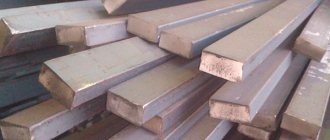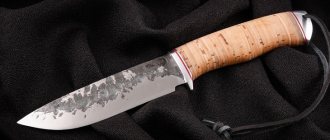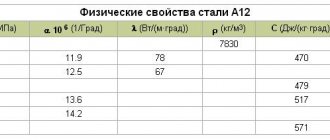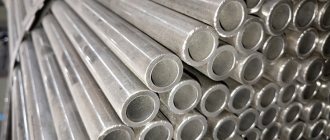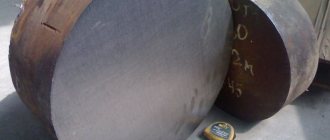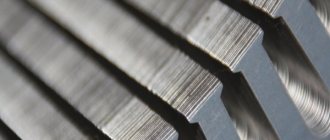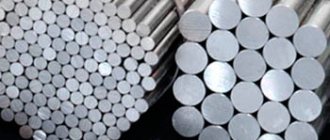Today, the industrial steel market is very rich. And in this regard, it is very difficult to choose exactly the grade of steel that is suitable for a particular project. You have to delve into the topic, study the characteristics, consider several options at once, hoping to find the right material.
In this article, we will make life a little easier for those who are looking for steel products for their projects. We will talk about steel 235, which is very common and revered in the field of metal structures. We will try to describe as informatively as possible all the most important aspects associated with this grade of steel.
Composition and structure
S235 steel belongs to the low-alloy group. The main component is iron. Additional components:
- Carbon - content up to 0.2%. Due to the low content of this element, the alloy is easily machined and has high ductility. Hardness and strength indicators are reduced.
- Manganese - no more than 0.6%. Increases strength.
- Silicon - no more than 0.06%. Slightly increases strength, ductility, heat resistance.
- Chromium, nickel, copper - the average amount of each component reaches 0.3%. Increases technical characteristics.
- Sulfur, phosphorus - no more than 0.05%. Refers to harmful impurities.
Impurities have virtually no effect on the final characteristics of the metal.
Analogs and substitute steels
The rolled metal market is truly extensive and therefore for the same operation you can easily find at least a couple of steels with similar composition and characteristics. However, you need to know what exactly to look for. For steel C235, the list of substitute alloys is as follows:
- St18kp;
- St3kp2;
- VSt3kp2.
Knowing the list of these steel grades, any buyer at least triples his chance of purchasing building materials for his needs. Although, with a high degree of probability, a good consultant will be able to point out analogues of a particular alloy free of charge.
Characteristics and properties
Characteristics:
- Density - 7.85 t/m3.
- Yield strength - up to 235 MPa.
- Tensile elongation is about 22%.
- The temporary strength indicator is 360 MPa.
Alloying additives change the characteristics and properties of the alloy. Silicon and copper increase the alloy's resistance to rust. The material has average resistance to oxidation. Parts can be stored in dry rooms that do not have special protection from moisture.
Steel mast (Photo: pixabay.com)
Decoding the steel grade
Let's start with what this steel is called. After all, its symbol can tell a lot of useful information. So a professional who knows how to “read” alloy grades will immediately understand that C235 is a construction, structural, low-alloy steel. This is evidenced by its marking, in which the letter “C” denotes its direct purpose - use in building structures, and the addition of numbers is the yield strength of the alloy, expressed in units of measurement - megapascals. This characteristic of steel is very important for industrial alloys, as it helps to calculate the maximum load that parts made of a particular metal can be subjected to without the risk of further critical deformation and, as a result, breakage.
Steel production
Manufacturing methods:
- Open hearth technology. Suitable for the production of high quality alloys. For smelting, special furnaces are used, into which up to 500 tons of consumable raw materials can be loaded. Using this method, scrap metal can be recycled. The maximum melt heating temperature is 2000 °C.
- Converter technology. Allows the production of metals with a high content of impurities. The furnace can be loaded with 900 tons of consumable raw materials. The melting process is fast. The temperature rises to 1600 °C in a few minutes.
- Electric melting technology. Suitable for smelting high quality alloy steels.
One of the methods that has lost popularity due to the advent of electric smelting technology is oxygen-converter.
Manufacturing stages:
- Melting of scrap, charge, consumable raw materials. A melt is formed in a special bath, over which other technological processes will be carried out. One of the main tasks of this stage is the removal of phosphorus from the composition. To do this, the temperature increases slightly, the composition is saturated with a sufficient amount of iron oxide.
- Boiling. At this stage, the amount of carbon in the composition decreases. Oxidation absorbs a large amount of heat. It is important to create a continuous flow of thermal energy to the bath so that the temperature regime is stable, without subsidence.
- Metal deoxidation. In order for the material to be of high quality, it is necessary to reduce the amount of oxygen in the composition. To do this, it is necessary to convert the iron oxide oxides to bind oxygen to the components of the composition. At this stage, one of two deoxidation technologies can be used - precipitation or diffusion.
Chemical composition (fusion analysis) of steel grade S235JR
| Mass fraction (%) | |
| C(max%) | |
| ≤ 16 | 0.19 |
| > 3 ≤ 40 | 0.19 |
| > 40 | 0.23 |
| Si (max%) | — |
| Mn (max%) | 1.50 |
| P(max%) | 0.045 |
| S(max%) | 0.045 |
| N(max%) | 0.014 |
| Cu (max%) | 0.60 |
Deoxidation method FN = boiling steels are not allowed. For long products with a thickness > 100 mm and C content as agreed. For long products, the S and P content can be 0.005% higher. For long products, the maximum sulfur content can be increased to improve machinability by 0.015% if the steel is saturated to change the sulfide morphology and the chemical composition shows a minimum Ca content of 0.0020%.
Areas of application
Material used in manufacturing:
- tavra, I-beam;
- corners, gussets;
- sheets, channels.
During production, manufacturers must comply with certain rules that are specified in government documents:
- GOST 8239;
- GOST 8509;
- GOST 8510;
- GOST 19425;
- GOST 19903;
- GOST 8240;
- GOST 7511;
- GOST 82.
The material is used in construction:
- TPP, nuclear power plant;
- educational buildings, scientific laboratories;
- frames for different buildings;
- technical trailers;
- overpasses, bridges;
- masts, towers.
Good weldability allows you to create structures of different shapes. Riveted joints are used for assembling metal structures that are subject to vibration loads.
Steel bridge supports (Photo: pixabay.com)
Application of structural steel grade St3
The characteristics of ordinary steel St3 are used for the production of pipes (profile, round, solid-rolled and welded), rolled profiles (angles, channels, rails), and sheets. It is not always possible to use St3; the use is often limited by the climatic component. To work in northern climates (below -41 °C), in open conditions, it is necessary to give preference to alloyed alloys with a reduced phosphorus concentration. There are no restrictions for the execution of products intended for other climatic zones - from temperate to tropical.
It is St3 that is the steel grade that is the most common of the entire structural category. This is explained by 3 factors:
- A set of technical parameters: the possibility of physical and chemical processing, excellent weldability.
- Low cost due to the low content of alloying substances, low processing requirements during smelting and machining, high tolerances for phosphorus and sulfur content.
- Large variation in the content of chemical elements (C 0.14-0.22; Mn up to 0.68; Si up to 20).
The characteristics of St3 (GOST 380-2005) are as follows:
- hardness 131 MPa;
- impact resistance;
- weldability without restrictions;
- high surface adhesion to a large number of paint and varnish coatings;
- the ability to increase strength through physical and chemical treatment.
Treatment
The material lends itself well to mechanical processing. The quality of welding is affected by the carbon content. For this material, the percentage of this component does not exceed 0.25%. This explains the ease of weldability of the alloy. The seam is strong, without internal voids. No cracks form inside or on the surface. To obtain a high-quality connection, when carrying out welding work, there is no need to perform additional operations - forging the seam, preheating the surfaces to be joined.
The ability to use metal for cold rolling depends on the ductility index. Relative tensile elongation - up to 24%. The size of the yield area is up to 2.4%. These figures show that this alloy can be effectively processed by flexible forming. To work with thick sheet metal, you need to preheat the workpieces. This will make it easier to process, and cracks will not form on metal surfaces. Thin sheets may crack when bending. To prevent this from happening, you need to heat the material and increase the bending radius.
S235 steel does not contain expensive additives and has a low price. It can be used in different directions, but we must not forget about the reduced strength and hardness.
Steel 09G2S - low-alloy structural steel for welded structures
Steel substitutes:
- 09GS,
- 09G2DT,
- 09G2T,
- 10G2S
Foreign analogues:
- TSt E 355 (1.0566) - Germany DIN
- A590 AZ, A 36-207 - France (AFNOR)
IMPORTANT!!! The possibility of replacement is determined in each specific case after assessing and comparing the properties of steels
Type of delivery
Long products, including shaped steel: GOST 19281-73, GOST 2590-88, GOST 2591-88, GOST 8239-89, GOST 8240-89. Thick sheet GOST 19281-89, GOST 5520-79, GOST 5521-93, GOST 19903-74. Thin sheet GOST 17066-80, GOST 19903-74, GOST 19904-74. Strip GOST 103-76, GOST 82-70.
Forgings and forged blanks GOST 1133-71.
Purpose
Parts of apparatus and vessels operating at temperatures from -70°C to +475°C under pressure. In steam and hot water pipelines - parts made of sheet metal - up to a temperature of 450°C, pipes - up to a temperature of 425°C, in boilers - sheet parts operating at temperatures up to 450°C, in all cases without pressure limitation. Fasteners in boilers and pipelines are used up to temperatures of 425°C and pressures of up to 10 N/mm2.
Steel grade 09G2S must be tested for tension at elevated temperatures.
As a result of such tests, the yield strength at 320 °C for sheets of steel grade 09G2S with a thickness of 60 mm and more should be at least 18 kg/mm2
Interpretation of steel 09G2S
The two-digit number 09 indicates the approximate carbon content in steel in hundredths of a percent, i.e. The carbon content in steel is approximately 0.09%.
Beech G means that the steel contains manganese in an amount of about 2%.
The letter C means that the steel contains silicon.
Application of steel 09G2S for reinforcement fasteners (GOST 33260-2015)
| Steel grade, according to GOST 1759.0 | Standard or specification for material | Application options | |||||
| Bolts, studs, screws | Nuts | Flat washers | |||||
| Ambient temperature, °C | Nominal pressure, MPa (kgf/cm2) | Ambient temperature, °C | Nominal pressure, MPa (kgf/cm2) | Ambient temperature, °C | Nominal pressure, MPa (kgf/cm2) | ||
| 09G2S | GOST 19281 | -70 to 425 | 16 (160) | -70 to 425 | 16 (160) | -70 to 450 | Not regulated |
Maximum permissible temperatures for the use of 09G2S steel in environments containing ammonia
| steel grade | Steel application temperature, °C at ammonia partial pressure, MPa (kgf/cm2) | ||
| St. 1(10) to 2(20) | St. 2(20) to 5(50) | St. 5(50) to 8(80) | |
| 09G2S | 300 | 300 | 300 |
NOTEThe conditions of use are established for a corrosion rate of the nitrogen layer of no more than 0.5 mm/year.
Maximum permissible temperature for using 09G2S steel in hydrogen-containing environments
| steel grade | Temperature of steel application, °C at partial pressure of hydrogen, MPa (kgf/cm2) | ||||||
| 1,5(15) | 2,5(25) | 5(50) | 10(100) | 20(200) | 30(300) | 40(400) | |
| 09G2S | 290 | 280 | 260 | 230 | 210 | 200 | 190 |
Mechanical properties
| GOST | Delivery status | Section, mm | σ0.2, MPa, | σв, MPa, | δ5 (δ4), % |
| no less | |||||
| GOST 19281-2014 | Long and shaped rolled products | To 10 | 345 | 490 | 21 |
| GOST 19281-2014 | Sheet and strip (transverse samples) | From 10 to 20 incl. | 325 | 470 | 21 |
| From 20 to 32 incl. | 305 | 460 | 21 | ||
| St. 32 to 60 incl. | 285 | 450 | 21 | ||
| St. 60 to 80 incl. | 275 | 440 | 21 | ||
| St. 80 to 160 incl. | 265 | 430 | 21 | ||
| GOST 19281-2014 | Sheet after quenching and tempering (transverse samples) | From 10 to 32 incl. | 365 | 490 | 19 |
| From 32 to 60 incl. | 315 | 450 | 21 | ||
| GOST 17066-94 | Hot rolled sheet | 2 — 3,9 | — | 490 | (21) |
Mechanical properties at elevated temperatures
| tsp., °C | σ0.2, MPa | σв, MPa | δ5, % | Ψ, % |
| 20 | 300 | 460 | 31 | 63 |
| 300 | 220 | 420 | 25 | 56 |
| 475 | 180 | 360 | 34 | 67 |
Note. Normalization at 930-950 °C.
Mechanical properties depending on tempering temperature
| tref., °C | σ0.2, MPa | σв, MPa | δ5, % | Ψ, % |
| 20 | 295 | 405 | 30 | 66 |
| 100 | 270 | 415 | 29 | 68 |
| 200 | 265 | 430 | — | — |
| 300 | 220 | 435 | — | — |
| 400 | 205 | 410 | 27 | 63 |
| 500 | 185 | 315 | — | 63 |
Impact strength KCU
| GOST 19281-89 | Long and shaped rolled products | From 5 to 10 From 10 to 20 incl. From 20 to 100 incl. | 645959 | 393434 | 3429— |
| Leaf and strip | From 5 to 10 From 10 to 160 incl. | 6459 | 3934 | 3429 | |
| Sheet after quenching and tempering (transverse samples) | From 10 to 60 | — | 49 | 29 |
Technological properties
Forging temperature, °C: beginning 1250, end 850. Weldability - weldable without restrictions. Welding methods: RDS, ADS submerged and gas shielded, ESW.
Cutting machinability - Kv tv.spl = 1.0 and Kv b.st = 1.6 in the normalized, tempered state at σв = 520 MPa.
Tendency to temper brittleness - not prone.
Flock sensitivity - not sensitive.
